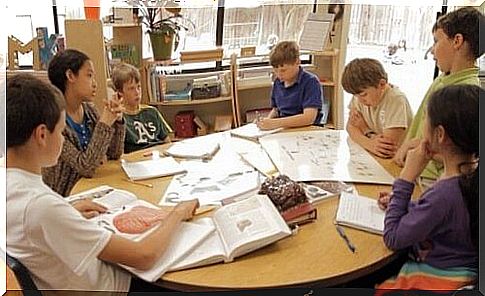Spencer Kagan And Cooperative Learning

Spencer Kagan is a renowned author who has conducted several studies on cooperative learning. This type of collaboration is different from how we traditionally think about learning and teaching. This is something completely different from a professor or teacher who transfers knowledge in most classrooms today. In fact, it is a new method of group learning that helps students develop significant skills and provides opportunities for personal growth.
After conducting extensive research, Kagan put forward a proposal to change what was known as cooperative learning. He organized this cooperative method in a much more flexible and efficient way. It allows people to learn about complex and generic subjects through dynamic processes. Kagan published an article in Kagan Online Magazine in which he explained that this method was like games that allow a person to learn while being entertained. Let us elaborate on this.
The principles behind cooperative learning
When Spencer Kagan designed the structure for his proposal for cooperative learning, he thought of four basic principles that we should always keep in mind if we want to use this method ourselves. In fact, they are fundamental elements of this form of learning and teaching.
- Positive interdependence : This is achieved by fulfilling the responsibility to perform the specific task individually. In addition, the whole group must agree on the answers they give and the strategies they will use to achieve a specific goal.
- Individual responsibility : The actions of each member of the group will directly affect the group as a whole. Of course, this effect can be both positive and negative. Each member is responsible for performing their own tasks for the group’s success.
- Equal participation : All members of the group shall have equal opportunities to participate in the activities. A very important part of this principle is that the work should be distributed equally to begin with. One member should not (should not) have more work than another.
- Simultaneous interaction : All participants must communicate with each other. It involves sharing opinions, expressing their feelings about the work, and making decisions together. If there is a lack of interaction, the group may break up, which will prevent the fulfillment of the goal.

That said, cooperative learning gives students the opportunity to:
- Develop their skills in collaboration.
- Improve his problem-solving ability.
- Improve their ability to defend a particular point of view.
- Learn to listen to others and respect their ideas, as well as to express their own opinions.
The benefits of cooperative learning
Cooperative learning allows the implementation of a number of different games (structures) that work with specific principles and clear goals in the classrooms. Each of them can be used for different subjects. For example, the same game could work for both math and language. This means that cooperative learning can work even in the subjects you least expect.
A very important fact about cooperative learning is that it can be used to teach different types of students. We can say that most schools and institutes use a traditional education system that is aimed at only one type of student. But, what about those who are more creative? Or those who have trouble remembering specific types of information? In these cases, Spencer Kagan’s structures are very useful, as they allow for a more complete learning.

The need for implementation of this type of learning
Some teachers may think that teaching a subject based on cooperative learning can be annoying. However, in reality it involves much less preparation and among the results is more efficiency. Although many learning institutions have a specific teaching method, we believe it is important to introduce some of Kagan’s structures and encourage teachers to try them out. That way, they can see with their own eyes whether it gives good results or not.
As we pointed out earlier in this article, a “traditional” form of education is the most common type used in schools around the country, despite inefficiency. Traditional learning does not encourage students to learn, but rather to memorize, and then forget. And this gets boring for many. It makes students ask themselves in the middle of the class, “Why are we learning this? What’s the point? ” In addition, it promotes a form of unhealthy competition among students.
One thing is for sure: being the best of everyone in the whole class by memorizing everything, just to get the teacher’s attention, hinders the development of the skills Kagan emphasizes. In short, teachers should keep in mind that students should be able to work, develop, learn and function as productively as possible, and to achieve this, they must implement the strategies that will promote this in practice.









